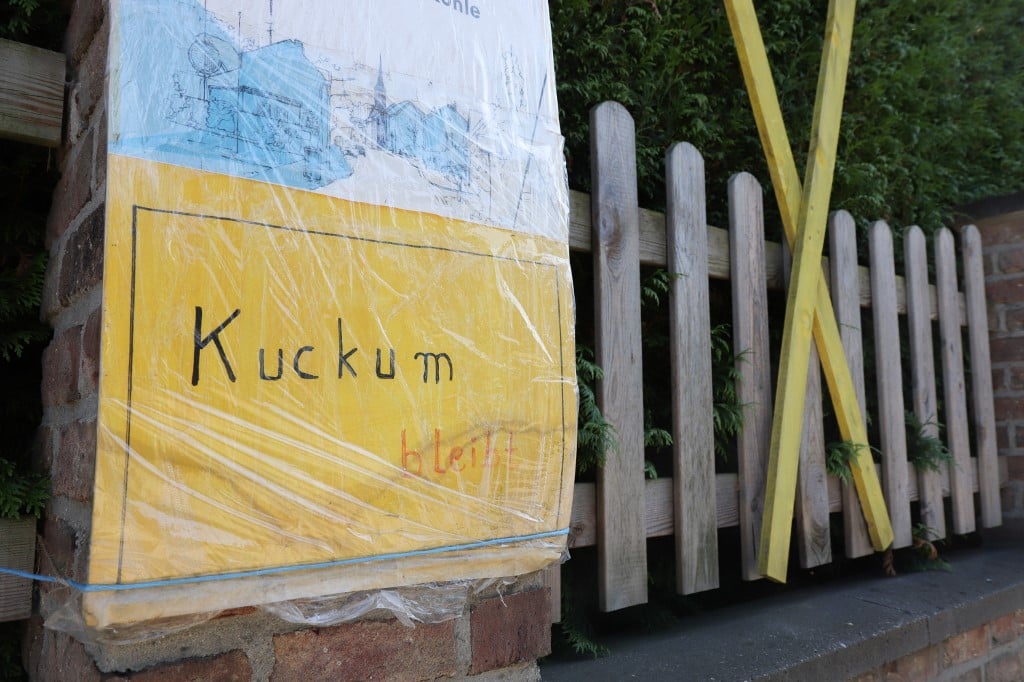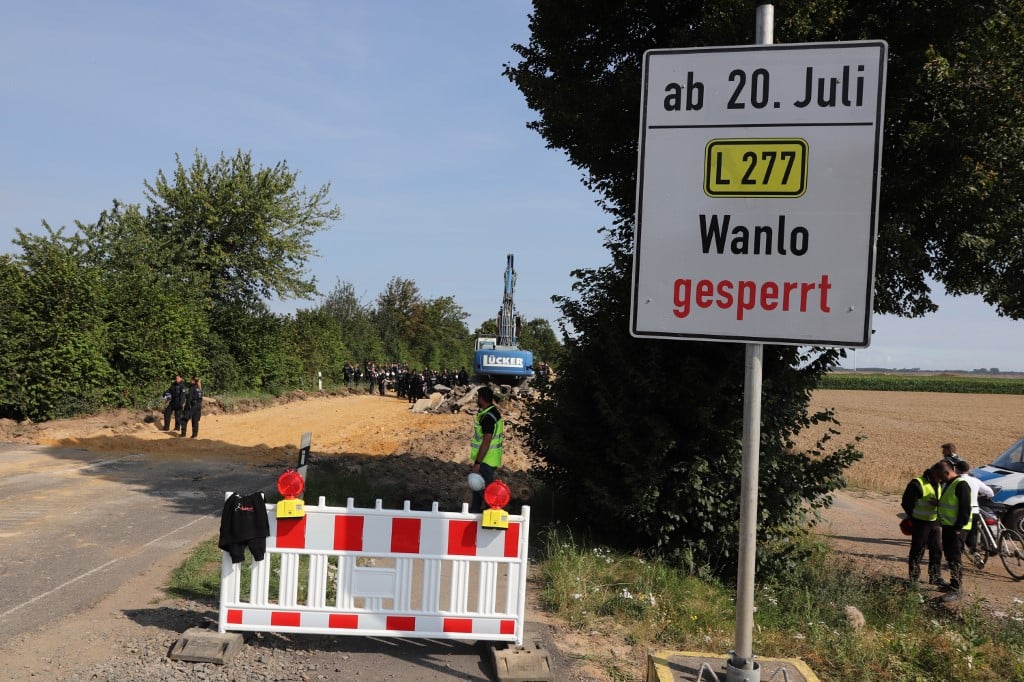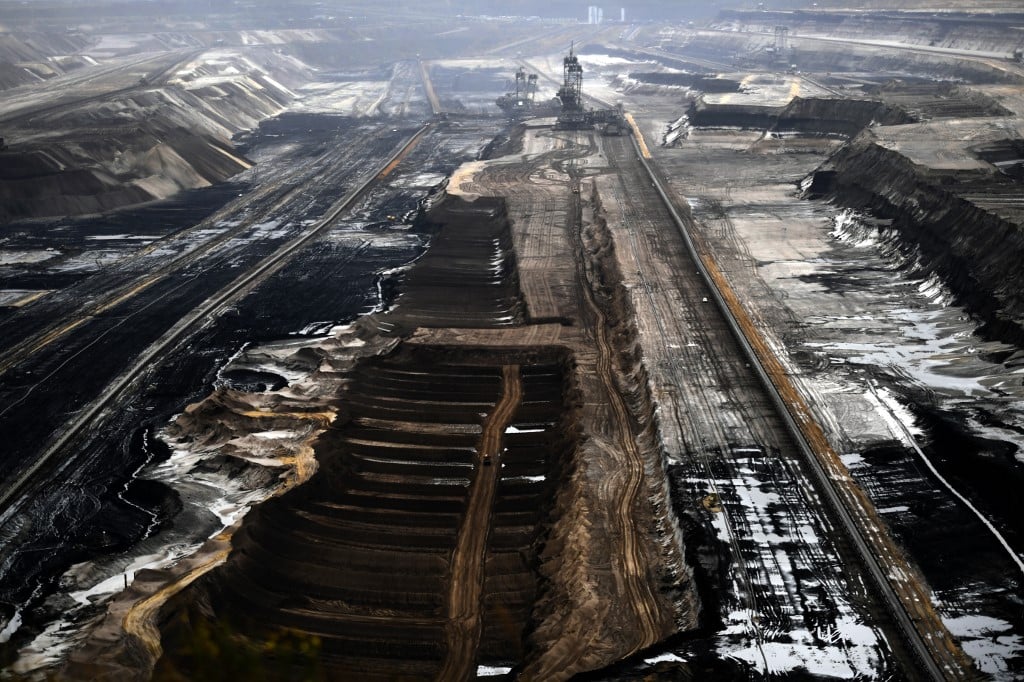A week after the death of a 27-year old journalist, police continued to clear the occupied forest. The remaining activists continued their fight for the old-growth forest, which is threatened by deforestation for coal mining.
“North Rhine-Westphalia promised us a time of peace after his death,” an activist in the forest who only wanted to be identified as Hugo told The Local by phone on Wednesday. “But we were never given the time to mourn.”
Six years ago, environmentalists built an estimated 70 tree huts in order to stop German energy giant RWE, who owns the property, from mining lignite there. Many remained in the occupation, situated in an old-growth forest, as police began to take down the structures two weeks ago.
Around 113 of the activists have been arrested, Aachen police reported on Wednesday. An additional 222 people have been detained, with 670 forced to leave the area. A total of 30 police officers have also been injured by protesters.

An activist is questioned by police after voluntarily roped down from a tree hut on Tuesday. Photo: DPA
During the protests last Wednesday, the journalist died after falling from a suspension bridge stretching least 15 metres high. As a result, the state government had temporarily stopped the clearance of the tree huts in the forest.
SEE ALSO: Operation to evict Hambach Forest activists suspended after tragic death
An ongoing fight for the forest
As of Wednesday morning, activists formed a barricade around the encampment of “Lorien” – one of the last remaining in the Hambach occupation – in order to stop police officers from clearing it. One women was lightly injured after falling from a platform. But the activists were determined to remain.
“Germany gives an environmentally-friendly image from the outside,” said Hugo. “But there is a clear link between the coal lobby and the state. It’s not the same as the interest of the people.”
Inner wall/#barricade build all around #Lorien this mornig to protect it from RWE's #CO2ps now threatening it with eviction #hambacherforst#hamvibleibt pic.twitter.com/IjVVpGRCul
— Hambacher Forst (@HambiBleibt) September 26, 2018
In an additional push to preserve ‘Hambi’, as the activists refer to the forest, an online petition now has 750,000 signatures – 300,000 who have signed in the past 14 days alone.
The encampment, they say, lies in the last remaining 10 percent of the ancient forest, which has been logged since the 1970s. Its adjacent Hambach opencast mine generates around 40 million tonnes of coal per year.
The petition is addressed – among others – to Prime Minister Armin Laschet (CDU) and Federal Environment Minister Svenja Schulze (SPD).
'Endangering the climate'
Some politicians have already taken note of the environmental impact, and demand that Hambach’s adjacent open-pit mine – the largest in Europe – be shut down.
“The lignite-fired power station is only blocking our pipelines and endangers the climate,” said Anton Hofreiter, leader of the Green parliamentary group in the Bundestag, last week.
The organizations behind the petition – Campact, BUND and Greenpeace – have also called for a demonstration at the Hambach forest on October 6th, days before RWE has said that it plans to begin clear-cutting the forest.
Following the death of the journalist, the company said in a statement they were 'deeply affected' and called for 'sensibility' to avoid other injuries.
Wir sind zutiefst erschüttert und bedauern den tragischen Unfall im Hambacher Forst sehr. Wir sind in Gedanken bei den Angehörigen des Verstorbenen.
— RWE AG (@RWE_AG) September 19, 2018
Before the incident, RWE's energy chairman Lars Kulik stated that coal was necessary in Germany for “secure and financially-feasible energy”.



 A sign reading “Kuckum stays” is pictured in Kuckum, near the Garzweiler coal mine in western Germany. AFP
A sign reading “Kuckum stays” is pictured in Kuckum, near the Garzweiler coal mine in western Germany. AFP This picture taken on July 22, 2020, near the Garzweiler coal mine shows a sign indicating the closure of the L277 road between Lützerath and Keyenberg.AFP
This picture taken on July 22, 2020, near the Garzweiler coal mine shows a sign indicating the closure of the L277 road between Lützerath and Keyenberg.AFP This file photo taken on November 28, 2019 shows the Garzweiler opencast mine of German energy giant RWE in Juechen, western Germany. AFP
This file photo taken on November 28, 2019 shows the Garzweiler opencast mine of German energy giant RWE in Juechen, western Germany. AFP Please whitelist us to continue reading.
Please whitelist us to continue reading.
Member comments